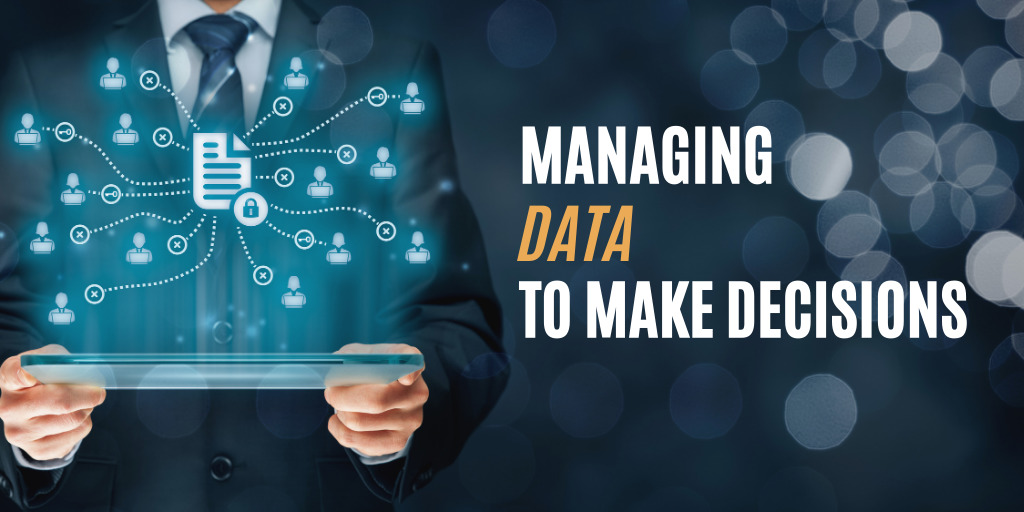As an Environmental practitioner, we obtain and generate lots of data and information. This knowledge is important for making decision and providing advice, preventing environmental impacts, and determining if management measures are effective. As such, it is essential that we have practices and process that allow us to access this information readily. This inSight provides and overview to Best Practices Data Management.
What is Considered “Data”?
Raw data is a term used to describe data in its most basic format such as numbers, statements, and images. Unorganised raw data is required to be processed into a form that is efficient for interpreting and communicating. Data that has been translated into valuable information provides context, relevance, and purpose (O’Neal, 2017; Guru99, 2020).

Why is Data Management Important?
Data and information management is the process of collecting, organising, storing, and protecting essential material so that it is easily accessible to your organisation (O’Neal, 2017; Blue Pencil, 2020). The data and information your company creates and receives is a valuable resource. Effective management ensures your company is receiving and reviewing the most recent information, allowing you to make accurate and informed decisions. How your company manages data and information will influence (Blue Pencil, 2020):
- Productivity: good data management means that your company will be able to effectively locate the material, quickly understand and relay information and be more organised and productive;
- Cost Efficiency: time is money, and having organised and accurate data will ensure that no unnecessary time will be spent on correcting errors or duplicating data;
- Data Loss: with an effective data management system, the risk of losing vital data will be reduced.

Best Practice Data Management
Standardisation
Organising a large volume of spreadsheets, reports, forms, and other documents can quickly escalate into UN-organised chaos. Adopting a standardised naming convention and filing system is a simple and effective practice for organising and managing important material. If implemented well, a standardised naming convention and filing system will allow for easy storage and retrieval of information (Waterloo Hydrogeologic, 2012).

Reduce Errors and Review
When compiling data, it is crucial to reduce the need for manual data entry. Transferring data from one spreadsheet to another runs the risk of entering errors, not to mention is extremely time consuming. Entering data manually allows the opportunity for duplicate entries, inconsistencies and formatting, spelling, and abbreviation errors.
When receiving new data or information from a client, or when finalising internal data and documents, the material should be reviewed. A review of the material will identify any errors that need to be addressed so that the correct information is conveyed. Removing duplicate entries, reconciling inconsistencies, and correcting formatting, spelling, and abbreviation errors will ensure that your data and information is consistent, accurate, and ready for reporting (Sharp, 2018).
Metadata
Metadata summarises the basic information about data by defining the context, relevance, and purpose, which can make finding and working with data easier. Descriptive metadata includes things such as the title, author, abstract and keywords utilised for efficient discovery and identification. Structural metadata shows how information is put together, for example, including a table of contents, page order and chapters. Administrative metadata includes information such as how the information was collected and created, as well as intellectual property rights, which enables better resource management (Villanova University, 2019).

Secure Your Data
A backup and recovery plan must be in place for the data and information that is valuable to your company. The plan should consider the small-scale internal errors such as corruption or accidental loss of a document, as well as major disasters which may take out your complete set of data.
Before commencing substantial changes to a large document, the document should be saved as a new version so that if the version you are working on becomes corrupt, an archived version is retrievable. Archiving previous versions of updated documents protects your data from in-house errors; however, this practice alone is not enough.

It is important to ensure your data is completely recoverable in the event of a fire, natural disaster, cyber-attack or another rare occurrence. This might mean having a backup device offsite or at least in another building or utilising cloud-based storage services where the data is located on a physically or logically separated network. Regardless of choice, ensuring your data is automatically and routinely backed up is essential.
Integrate Sustainability has experience in managing data and information. If you or your company requires advice or assistance in managing your environmental, heritage or safety data and information, please call Integrate Sustainability on 08 9468 0338 or email enquiries@integratesustainability.com.au.
Reference
Blue Pencil. (2020). What is Data Management and Why is it Vital. Retrieved from https://www.blue-pencil.ca/what-is-data-management-and-why-it-is important/#:~:text=Data%20Management%20Will%20Increase%20Your%20Productivity&text=Good%20data%20management%3A,need%20to%20do%20their%20job.&text=Provides%20the%20structure%20for%20informatio
Guru99. (2020, October 14). Difference between Information and Data. Retrieved from Guru99: https://www.guru99.com/difference-information-data.html
Image 1. Deoras, S., 2018. 10 Best Data Cleaning Tools To Get The Most Out Of Your Data. [Online]
Available at: https://analyticsindiamag.com/10-best-data-cleaning-tools-get-data/
[Accessed October 2020].
Image 2. Internet of Water, 2018. What are data, information, and knowledge?. [Online]
Available at: https://internetofwater.org/valuing-data/what-are-data-information-and-knowledge/
[Accessed October 2020].
Image 3. Errant Science, 2014. How not to organise data. [Online]
Available at: https://errantscience.com/blog/2014/08/06/how-not-to-organise-data/
[Accessed October 2020].
Image 4. Kononow, P., 2018. What is Metadata (with Examples). [Online]
Available at: https://dataedo.com/kb/data-glossary/what-is-metadata
[Accessed October 2020].
Image 5. Coos, A., 2020. How Endpoint Protector Keeps Data Secure on DaaS Platforms. [Online]
Available at: https://www.endpointprotector.com/blog/how-endpoint-protector-keeps-data-secure-on-daas-platforms/
[Accessed October 2020].
O’Neal, K. (2017, November 22). What’s the differnce between information management and data management? Retrieved from First San Francisco Partners: https://www.firstsanfranciscopartners.com/blog/difference-between-information-management-data-management/?cn-reloaded=1
Sharp, K. (2018, November 13). 6 Environmental Data Management Best Practices. Retrieved from Perillon: http://www.perillon.com/blog/environmental-data-management-best-practices
Villanova University. (2019, October 24). Metadata and Its Importance in a Data Driven World. Retrieved from Villanova University: https://www.villanovau.com/resources/bi/metadata-importance-in-data-driven-world/#:~:text=Metadata%20is%20essential%20for%20maintaining,and%20over%20the%20longer%20term.
Waterloo Hydrogeologic. (2012, June 26). Top 5 Best Practice Environmental Data Management. Retrieved from Waterloo Hydrogeologic: https://www.waterloohydrogeologic.com/2012/06/26/top-5-best-practices-in-environmental-data-management/

